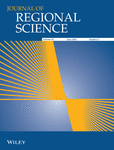Journal list menu
Export Citations
Download PDFs
Editorial
Open Access
oa
Recent Advances in Complex Networks Theories with Applications
- First Published: 23 July 2014
Research Article
Open Access
oa
An Energy Efficient Simultaneous-Node Repositioning Algorithm for Mobile Sensor Networks
- First Published: 23 July 2014
Research Article
Open Access
oa
Extraction of Multilayered Social Networks from Activity Data
- First Published: 02 July 2014
Research Article
Open Access
oa
A Social Diffusion Model with an Application on Election Simulation
- First Published: 05 June 2014
Research Article
Open Access
oa
Distributed Leader-Following Finite-Time Consensus Control for Linear Multiagent Systems under Switching Topology
- First Published: 24 April 2014
Research Article
Open Access
oa
Towards an Optimal Energy Consumption for Unattended Mobile Sensor Networks through Autonomous Sensor Redeployment
- First Published: 22 April 2014
Research Article
Open Access
oa
In-Band Asymmetry Compensation for Accurate Time/Phase Transport over Optical Transport Network
- First Published: 10 April 2014
Research Article
Open Access
oa
Content Patterns in Topic-Based Overlapping Communities
- First Published: 09 April 2014
Research Article
Open Access
oa
Modeling and Simulation of Complex Network Attributes on Coordinating Large Multiagent System
- First Published: 03 April 2014
Research Article
Open Access
oa
Discovering the Influences of Complex Network Effects on Recovering Large Scale Multiagent Systems
- First Published: 02 April 2014
Research Article
Open Access
oa
A Novel Joint Problem of Routing, Scheduling, and Variable-Width Channel Allocation in WMNs
- First Published: 02 April 2014
Research Article
Open Access
oa
SVM-Based Spectrum Mobility Prediction Scheme in Mobile Cognitive Radio Networks
- First Published: 30 March 2014
Research Article
Open Access
oa
Robust H∞ Filtering for a Class of Complex Networks with Stochastic Packet Dropouts and Time Delays
- First Published: 27 March 2014
Research Article
Open Access
oa
Secure and Fair Cluster Head Selection Protocol for Enhancing Security in Mobile Ad Hoc Networks
- First Published: 27 March 2014
Research Article
Open Access
oa
Assessment on Knowledge Network Sharing Capability of Industrial Cluster Based on Dempster-Shafer Theory of Evidence
- First Published: 24 March 2014
Research Article
Open Access
oa
Modeling of Information Diffusion in Twitter-Like Social Networks under Information Overload
- First Published: 23 March 2014
Research Article
Open Access
oa
An Improved Proportionate Normalized Least-Mean-Square Algorithm for Broadband Multipath Channel Estimation
- First Published: 20 March 2014
Research Article
Open Access
oa
A Fast Overlapping Community Detection Algorithm with Self-Correcting Ability
- First Published: 13 March 2014
Research Article
Open Access
oa
WDM Network and Multicasting Protocol Strategies
- First Published: 12 March 2014
Research Article
Open Access
oa
Motion Adaptive Vertical Handoff in Cellular/WLAN Heterogeneous Wireless Network
- First Published: 11 March 2014





